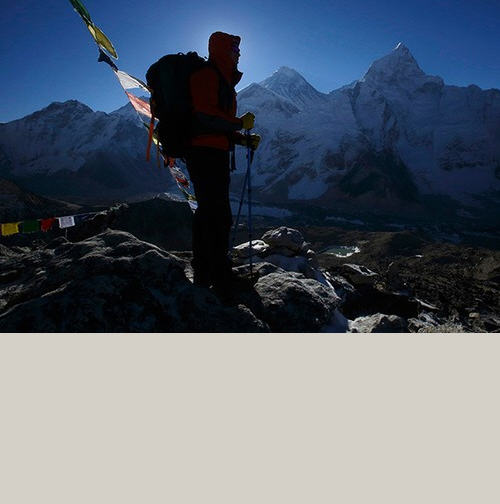In April 2014, an avalanche killed 16 Sherpas - the mountain guides on Mount Everest - the world's highest mountain.
This heartbreaking accident has sparked debates with Sherpas wanting to stop climbing to express their condolences to their unfortunate colleagues and the Nepalese government refusing to "close" the mountain.
Sherpa is the name of a group of ethnic minorities living in the Himalayas located in the East of Nepal. As people who have a very good understanding of the geography of the Himalayan mountain range, Sherpa became experienced guides and also a valuable assistant to climbers from the early days of exploring the Himalayas and conquering Mount Everest.
Photographer Navesh Chitrakar has documented the lives of Sherpas on Mount Everest to shed some light on the hardships they endure.
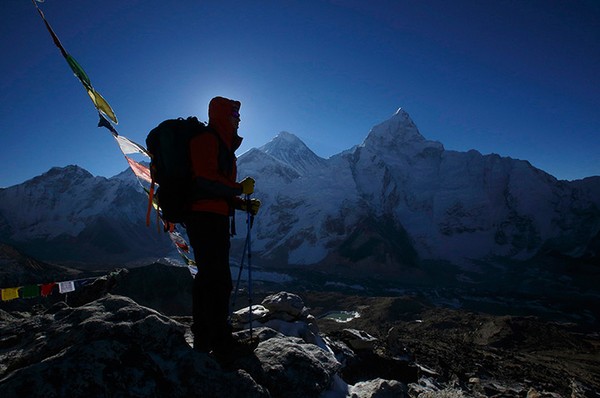
In this photo, a climber is at an altitude of more than 8,800m on the Kala Patthar peak in the Solukhumbu region. Despite the news of the death of Sherpa guides, the high cost of climbing, and the constant danger, hundreds of people from different countries still flock to Everest and are determined to conquer this peak.
However, recently, Sherpas have protested by quitting their jobs, forcing many climbers to abandon their journeys.
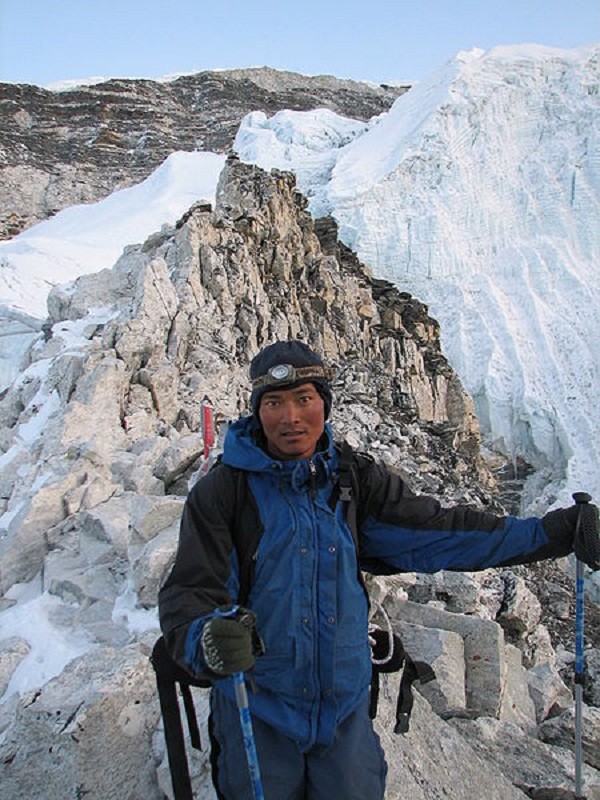

When the British began their journey to conquer Mount Everest in the 20th century, they relied on Sherpas to guide them and carry all their luggage up the mountain.
Sherpas are admired for their stamina, enthusiasm and ability to work well in thin air conditions. Helping tourists reach the top of high mountains has become the main source of income for Sherpas.

This “transporter” Lakpa Sherpa is 42 years old this year. He helps tourists secure climbing ropes, carry tools, oxygen tanks and food to the top of Everest, and also rescues people in danger while climbing.
Climbers are willing to spend up to $60,000 for the entire journey and pay Sherpas between $2,000 and $3,000. Some Sherpas even start their own businesses or build hotels and guesthouses to serve tourists.
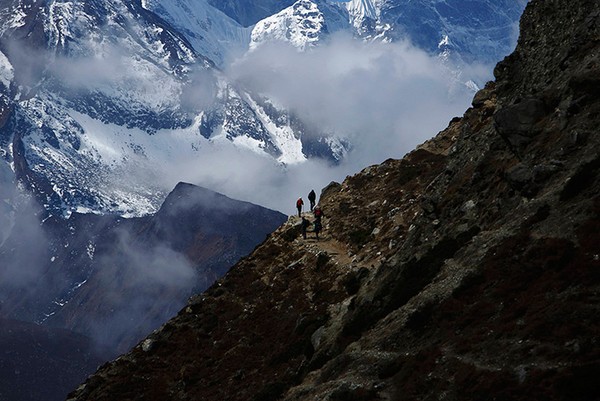
The climbers are seen returning after reaching the base camp at Pheriche, at 4,300m above sea level with Mount Thamserku in sight. Without the help of Sherpas, the climbers would not have been able to reach the summit.

Although Sherpas know the area like the back of their hands, many have lost their lives while trying to conquer Everest. Nima Doma's husband, Lakpa, was killed in an avalanche last April. In this photo, she is holding her daughter and her parents-in-law in their home in Khumjung.
The avalanche became the most terrible accident in the history of Everest climbing. In addition to Lakpa, another guide named Mingma Tenzing also died in April in addition to other serious injuries caused by the avalanche. It can be said that 2014 became the most tragic year in the history of Everest climbing.
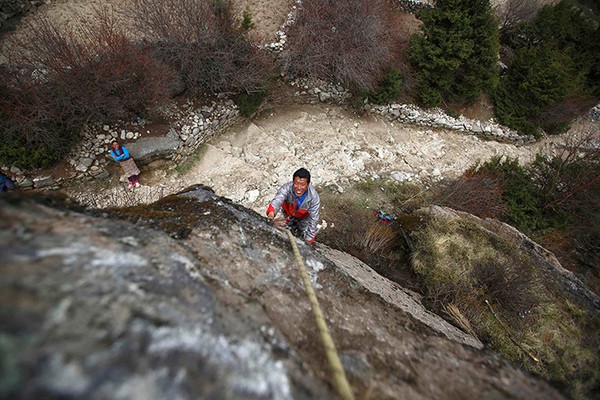
Temba Sherpa (45 years old) has climbed Everest seven times. He is climbing to clean the prayer stone in Khumjung. Most Sherpas are Buddhist.
Besides, they also believe that God and demons also exist in every forest, mountain, and cave. According to them, we need to respect and show our devotion through the rituals that have been passed down from our ancestors since ancient times.
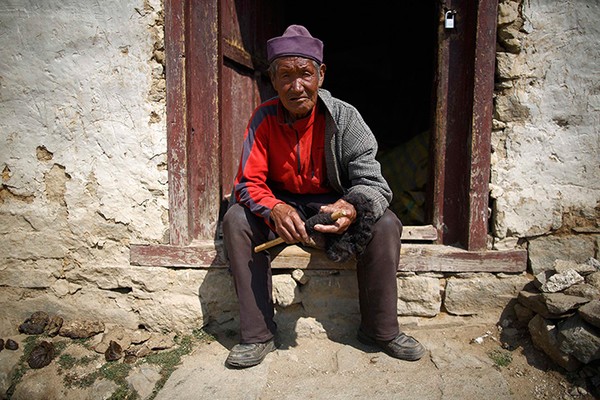
In the picture is 90-year-old Khunjung Sherpa sitting in front of his house in Namche. When he was a “transporter” of luggage to the top of the mountain for tourists, he only earned 0.09 USD/day (about 20,000 VND).
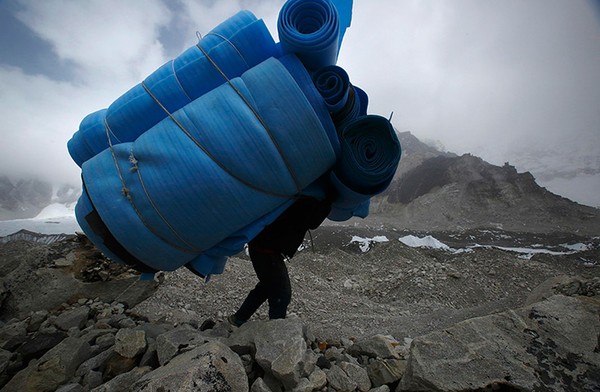
Sherpas are not only underpaid for their efforts, but also face disrespect from some climbers. Last April, the climbing world was stunned by news of a brawl between three Westerners and Sherpas.
According to the investigation, these 3 tourists disrespected the Sherpas and even ignored the safety regulations when climbing. Sadly, being treated disrespectfully, taken advantage of, and not paying by customers is becoming more and more common and “familiar” to the Sherpas.
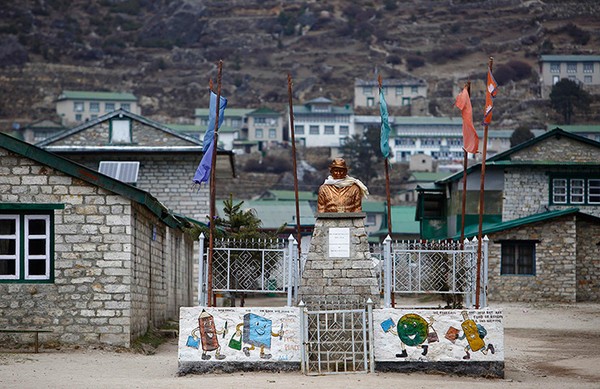
A statue of Sir Edmund Hillary is located in the Khumjung School campus, he was also the founder of this school.
Edmund was known as the “Sherpa King”, and he dedicated his life to serving the Sherpa people by building schools, hospitals, and improving their living standards.
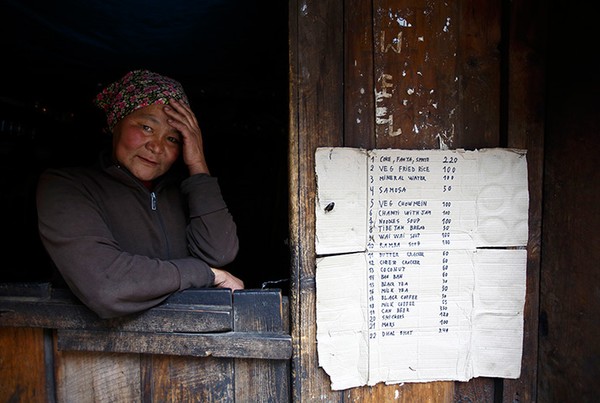
A Sherpa woman sits at a window selling food and drinks to tourists visiting Namche in the Solukhumbu region.
The tourism industry has helped the Sherpas become more prosperous. Many have even adapted to Western lifestyles while others continue to live the way their ancestors did centuries ago.
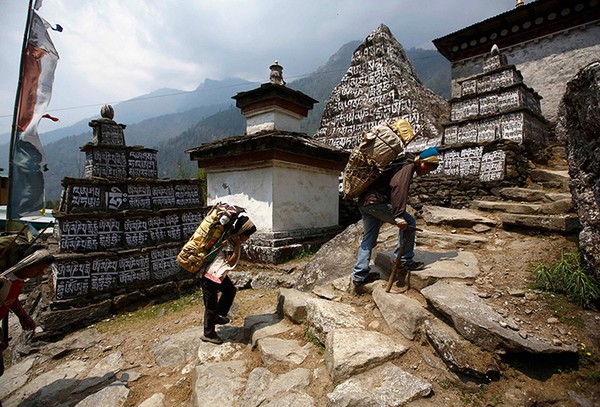
Kedar Rai and his children carry goods to their shop in the Solukhumbu region. To this day, Sherpas travel only on foot, without relying on cars or any other means of transport.

“Transporter” Lakpa Sherpa stands in front of Kongde Mountain at an altitude of approximately 3,400m above sea level. Although the work is difficult and can be life-threatening, Sherpas still work hard to make a living for their families.
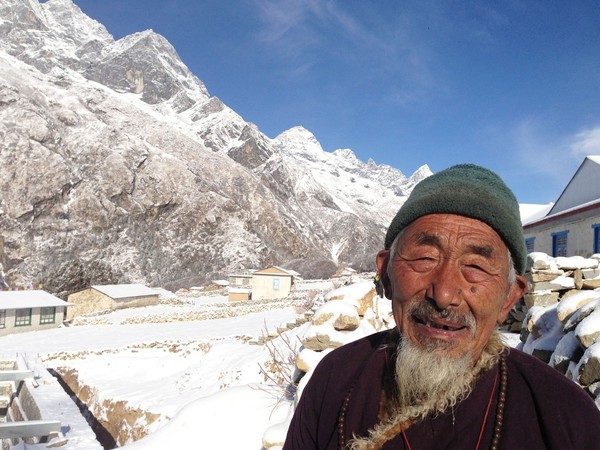
Over the past decades, world organizations have made certain efforts to improve the lives of people here.
An organization was set up to bring health care and medicine to remote villages. In addition, hydroelectric power plants, schools and hospitals were built.
* The article uses reference materials from sources: Discovery News, The Guardian, Wikipedia...





